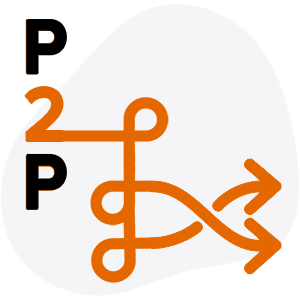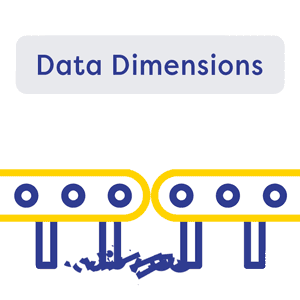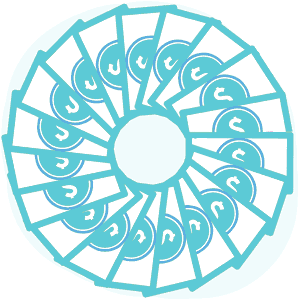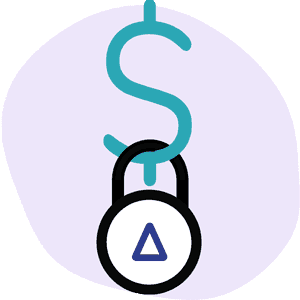P2P Clearinghouse Erroneously Shares Patient Info
.png)
P2P, a workers’ comp clearinghouse, erroneously sent daisyBill ‘277 Acknowledgements’ confirming receipt of a practice’s e-bills — however, the practice is not a daisyBill client.
The 277 Acknowledgements P2P sent to daisyBill contained patient information, including names and Social Security numbers. daisyBill immediately contacted P2P representatives who instructed daisyBill to destroy the files.
We regularly warn providers about the dangers of using a single clearinghouse to submit all workers’ comp bills, and strongly recommend that providers send e-bills to the specific clearinghouse vendor hired by the claims administrator.
In this case, the non-daisyBill practice may be submitting all of its workers’ comp e-bills to P2P. This time, the consequences were not catastrophic — but the story is a potent reminder of what can (and does) go wrong with single-clearinghouse e-billing.
From accidental sharing of patient information, to lost or delayed e-bills, to the nationwide meltdown resulting from the Change Healthcare cyberattack, the damage caused by technological errors and cyberattacks is magnified by over-consolidation.
In other words, providers should not put all their e-billing eggs in any one clearinghouse’s basket.
P2P Sends e-Bill “Receipts” to Wrong Place
In e-billing, a 277 Acknowledgement functions as an electronic “receipt,” confirming that the clearinghouse received a provider’s e-bill. This Acknowledgement reports whether the clearinghouse
- Accepted and forwarded the e-bill to the claims administrator, or
- Rejected the e-bill and did not forward it to the claims administrator
On March 20, 2024, P2P sent daisyBill 277 Acknowledgement files containing 121 e-bills. The Acknowledgements in the 18 files did not match e-bills sent by daisyBill providers, so our representatives alerted P2P to the error.
On March 25th, P2P confirmed that their team “discovered a syntax error in an internal file delivery,” leading to the accidental transmission of the 277 Acknowledgements to daisyBill. P2P instructed daisyBill to “destroy the files” and reported that the error had been corrected “on Optum’s end.” Optum (of which Change Healthcare is a part) is affiliated with P2P.
Providers using P2P to send workers’ comp e-bills should verify receipt of 277 Acknowledgements on or about March 20th. If you did not receive the proper Acknowledgements, P2P might have erroneously sent the acknowledgments to the wrong provider. Contact P2P directly with concerns or questions.
Single-Clearinghouse e-Billing: A Recipe for Trouble
The 277 Acknowledgements P2P sent to daisyBill listed patient names, Social Security numbers, and other information, including the names of the claims administrators for which each e-bill was meant.
The table below lists those claims administrators and the clearinghouse vendor each claims administrator uses to accept providers’ e-bills and remit 277 Acknowledgements and electronic Explanations of Review (e-EORs).
Claims Administrator |
Clearinghouse Vendor |
Gallagher Bassett |
Jopari |
The Zenith |
Jopari |
Broadspire |
Carisk |
ESIS |
Data Dimensions |
American Claims Management |
Data Dimensions |
AmTrust North America, Inc. |
Data Dimensions |
Creative Risk Solutions |
Carisk |
California Insurance Guarantee Association |
Data Dimensions |
Adminsure, Inc. |
Data Dimensions |
Murphy & Bean |
Data Dimensions |
Athens Administrators |
Data Dimensions |
Southern California Edison |
Data Dimensions |
Sedgwick Claims Management Services, Inc. |
Data Dimensions CorVel |
County of Los Angeles |
Data Dimensions CorVel |
Keenan & Associates |
Data Dimensions |
Helmsman Management Services LLC |
Jopari |
Presumably, the non-daisyBill practice expected P2P to distribute all of its workers’ comp e-bills to the correct clearinghouse chosen by the claims administrator — an awkward process we call a clearinghouse-to-clearinghouse “hop.”
By contrast, daisyBill submits each e-bill to the correct clearinghouse (as illustrated below) chosen by the claims administrator. daisyBill sends the fewest number of our e-bills to P2P (less than 0.5%).
Because of direct clearinghouse e-bill routing, over 92% of daisyBill providers’ e-bills make it to the claims administrator intact as e-bills (we deliver the rest via alternative routes), and our providers consistently receive 277 Acknowledgements and e-EORs.
If your practice is considering sending workers’ comp e-bills, please (please) do not use a single clearinghouse. As demonstrated by this incident, countless lost e-bills, and the fallout from the Change debacle, things can go sideways quickly.
Thanks to our custom network of EDI pathways, daisyBill providers’ e-bills get to the payer quickly. Request a free demonstration below.
REQUEST DEMO
DaisyBill provides content as an insightful service to its readers and clients. It does not offer legal advice and cannot guarantee the accuracy or suitability of its content for a particular purpose.



.gif)



